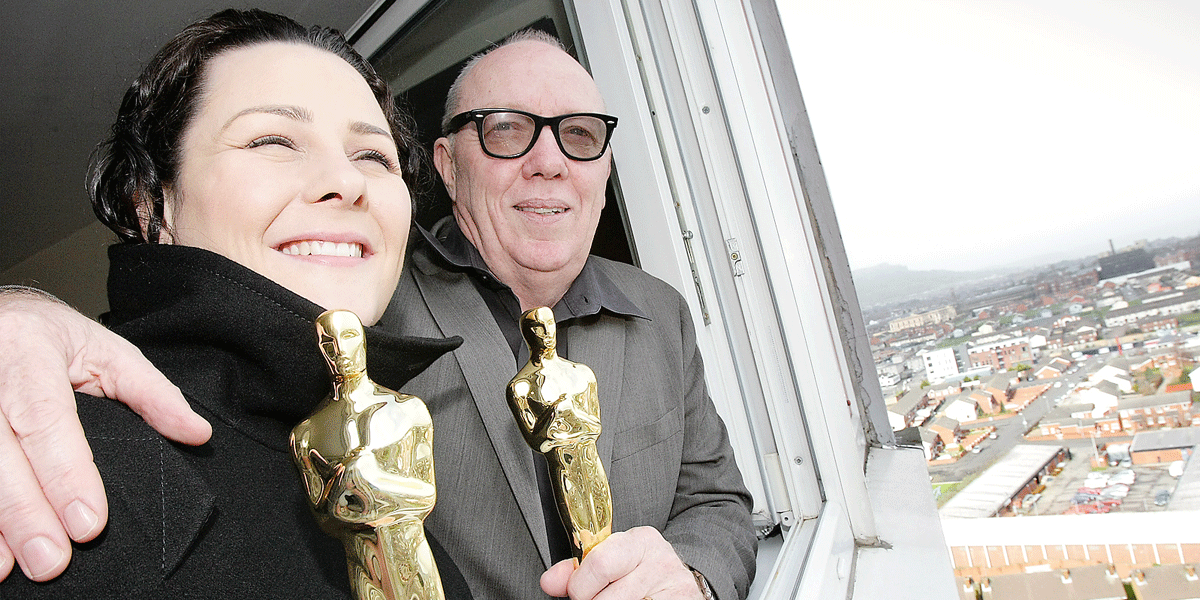There will be many straws in the wind to indicate when the benefits of peace have arrived in the working class communities of Belfast. A new stadium at Casement would certainly be one – hopefully the buffoons who regard Roger Casement as a ‘terrorist’ can hold their tongues when the opening rolls around in 2015 – and, indeed, a leisure centre easily accessible to the nationalists of North Belfast would be another. And it’s not only nationalists who have a place in the peace dividend queue. The economic wasteland which is much of Sandy Row also deserves a fair crack of the whip, so a new centre at the former Gilpin’s furniture store, as impressive at the Cultúrlann, would also cheer the soul.
What is absolutely crucial, though, is that the gateways from the city centre become vibrant arteries of activity, leisure, commerce and community. For 30 years, West Belfast has been cut adrift from the city centre by the Westlink and by the barren stretches of Divis Street. There was a British military logic to that at one time: the top brass wanted a cordon sanitaire between the natives and the commercial core during the IRA’s bombing campaign. And while that campaign, thankfully, is but a memory, the distance between city centre (prime target for investment and jobs) and the West remains. Ditto East Belfast, with its Short Stand/Bridge End
‘shatter zone’, and North Belfast.
Last month, I feared this disconnect between our communities and the vibrant city core would be worsened by the draft Belfast City Masterplan presented to councillors. But since then, sense has prevailed, most importantly a proposal in the draft plan to exclude the ‘neighbourhoods’ from physical developments – new sports amenities, community centres, peace museums, art galleries, training hubs and more – is now to be binned. Similarly, the draft plan’s proposal to move the city core south towards the sadly dilapidated Shaftesbury Square and the no-man’s-land that is the inner northside of Belfast has been amended to ensure that we also tackle the lack of investment around the West Belfast gateway from the city centre and the East Belfast axis.
We are all but masterplanned-out. Last time I looked, there were more masterplans and consultancy reports – all costing a pretty penny – around the development of Bank Square and Castle Street than there are rickshaws in Rangoon. All those masterplans have come to naught, but hopefully now we have a real plan of action for Belfast linked to the no-nonsense investment plan unveiled by City Fathers and Mothers in February.
I travel – by rickshaw, if
necessary – in hope.
SINCE I last graced these pages, I have been in New York to attend the Irish Echo 40 under 40 celebration, recognising 40 of the most talented and most generous young leaders of Irish America. Among the 40 was Oorlagh George, producer of the short movie The Shore, which picked up an Oscar the week before last.
I have previously remarked on the talent and unbounded energy of Oorlagh and hope as many of our readers as possible get to meet her and dad Terry this week during their homecoming victory lap. Every time I hear communities like those of Twinbrook or Turf Lodge or Ballysillan referred to as ‘deprived’ or ‘disadvantaged’, my hackles go up. Those who use such terms usually don’t mean to diss these communities, but the cumulative effect is to create an image of neighbourhoods where misery reigns. The reality, of course, despite decades of underinvestment and neglect, is quite different. In fact, you could argue that these areas are the most vital in all of Belfast with their vibrant community network, dynamic leadership and rich heritage and cultural treasures – not to mention those environmental jewels, the Bog Meadows, Falls Park and Black Mountain.
And isn’t it peculiar that the greatest prize which can be won in the world of cinema should go to a team who hail from Short Stand and Twinbrook? Surely if you use the deprivation index then these areas should be barren of such talent and endeavour – certainly that’s the belief of many in power when it comes to considering these communities for investment of jobs or resources.
Of course, if you regard these communities as the greatest of Belfast then there’s no surprise at all that they produce the greatest film-makers of our time. It’s time, methinks, to see our communities through a different lens, one which reflects our worldview and not those of the great and the good. Only in that way can these emerging areas get the investment, jobs and opportunities which their talent and ambition demand.
In that respect, I remain an unabashed fan of the proposals by Ulster University Vice-Chancellor Richard Barnett to bring the University of Ulster into Belfast’s long-neglected northern city centre. I believe this is a once-in-a-lifetime opportunity to impact powerfully on the educational achievement levels of young people who will live cheek-by-jowl with the new campus. And in that regard, the work the University of Ulster has been doing with primary schools and all-ability secondary schools to encourage our young people to seek a college education has been groundbreaking. I am confident the university will build on that work in the time ahead. That said, I’m once-bitten. The debacle of the Springvale university – ‘opened’ by Tony Blair and Bill Clinton but never delivered – is a blot on the record of the University of Ulster. It means they must work twice as hard to win our confidence. However, I believe they understand that, and this time round the working class communities have their hands on the tiller of power. This time, failure cannot be an option.



